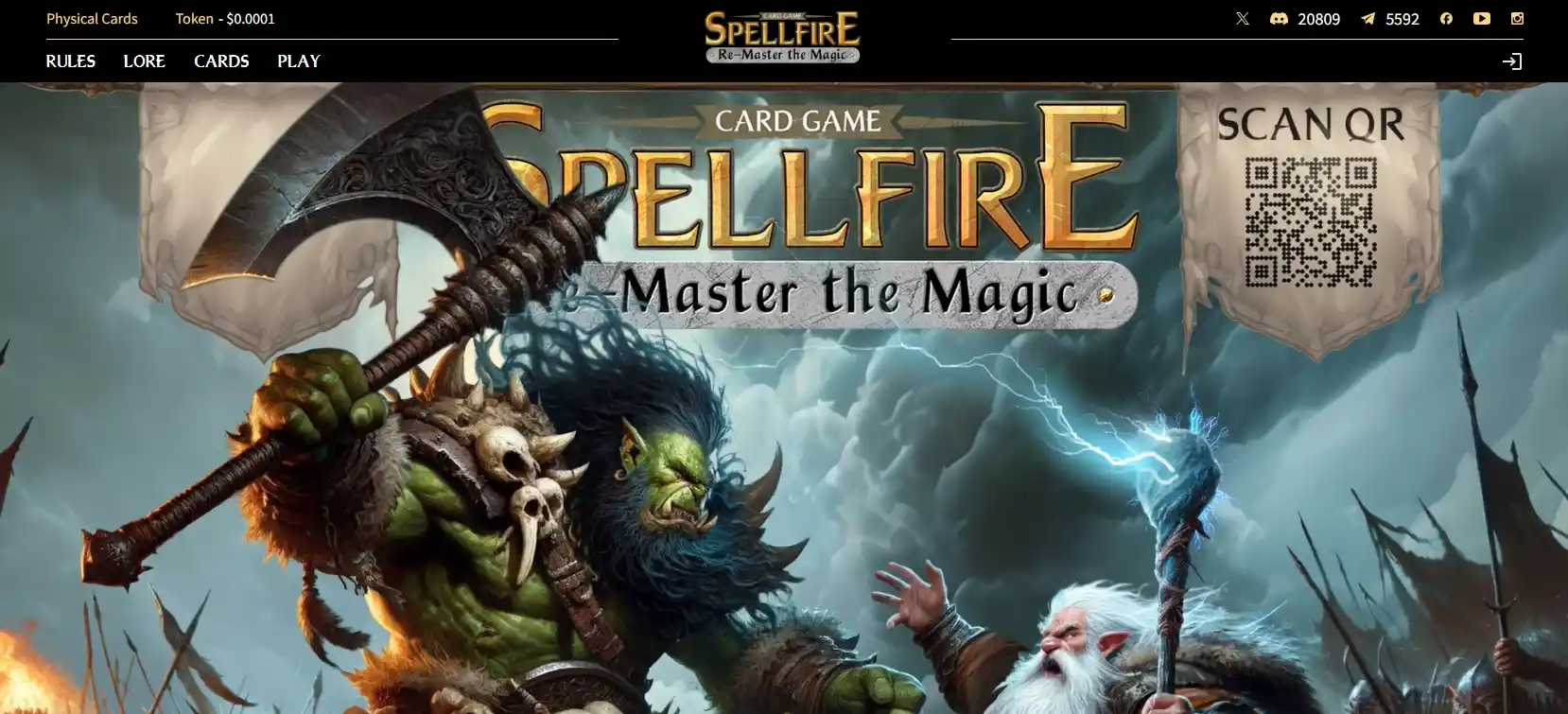Spellfire is a collectible card game first released in 1994 by TSR. Inspired by the Dungeons & Dragons universe, it quickly gained popularity among fantasy and strategy enthusiasts. In 2023, the project was revived, offering players updated mechanics and modern design.
The distinctive feature of Spellfire is dynamic battles where participants use spells, creatures, and artifacts to capture opponents' kingdoms. The gameplay combines tactical planning with elements of chance, making each match unique.
Contents:
- History and revival of Spellfire
- Basic rules and game mechanics
- Card types and their strategic roles
- Tips for beginners: how to start playing
- Future of Spellfire: developers' plans
- Conclusion
History and revival of Spellfire
Initially, Spellfire was conceived as an alternative to Magic: The Gathering, but with a focus on the Dungeons & Dragons world. The first edition was released in 1994 and featured cards based on classic D&D locations and characters. However, due to distribution challenges, the game did not achieve the expected success and was forgotten for many years.
In 2023, the rights to the brand were acquired by Spellfire Re-Master the Magic, which relaunched the project. The new editions retained the spirit of the original, but added improved balance, modern design, and support for digital platforms. The developers also announced a collaboration with renowned fantasy artists, which made the cards visually appealing.
Basic rules and game mechanics
The primary objective in Spellfire is to capture a set number of opponent's kingdoms or deplete their deck. Players utilize three zone types: kingdoms, hand, and discard. Each turn consists of multiple phases: preparation, card play, and conclusion.
A unique gameplay feature is the "ring of fire" system that determines action sequence. Unlike other CCGs, there's no strict division between "lands" and "creatures." Instead, cards can assume different roles depending on circumstances. For instance, a spell might serve as defense while an artifact could boost attack power.
Card types and their strategic roles
In Spellfire, each card plays a distinct role, and strategic success depends on their skillful combination. Primary card types serve different functions: some provide kingdom control, others enhance attacks or offer tactical advantages.
Key card categories and their applications:
| Card Type | Example | Primary Function |
|---|---|---|
| Kingdoms | Wizard's Tower | Primary capture points that secure victory |
| Heroes | Elven Archer | Kingdom attack and defense |
| Monsters | Darkflame Dragon | Powerful yet unpredictable allies |
| Spells | Fireball | Instant effects and destruction |
| Artifacts | Tome of Forgotten Spells | Permanent bonuses and special abilities |
Card selection determines playstyle: aggressive, defensive, or combo-oriented. For example, a monster-and-spell focused deck suits quick assaults, while artifacts and heroes facilitate long-term strategy. Experimentation with different combinations is key to finding optimal balance.
Tips for beginners: how to start playing
Mastering Spellfire requires understanding fundamentals, but beginners should avoid complex strategies initially. The best approach is starting with simple tactics while gradually learning card interactions and mechanics. Early games should focus on grasping core concepts rather than immediate victories.
Essential beginner recommendations:
- Use preconstructed decks from starter sets
- Maintain balance between offensive and defensive cards
- Carefully review each played card's effects
- Begin with one-on-one matches
After 10-15 games, you'll naturally recognize effective combinations and understand different card types' strategic potential. Early losses provide valuable experience—don't be discouraged. Eventually, you'll progress to building custom decks and participating in advanced matches.
Future of Spellfire: developers' plans
Spellfire's developers are actively expanding the game universe. Near-term plans include thematic expansions introducing new factions and mechanics. Particular attention goes to card balance to maintain strategic depth when adding content.
Digital adaptation represents another key development direction. A mobile client will attract new audiences and enable play anytime. Simultaneously, work continues on an online tournament system with varied formats.
The community plays a pivotal role in Spellfire's evolution. Developers regularly analyze player feedback, adapting plans to audience preferences. This approach ensures the game evolves in ways appealing to both newcomers and veteran collectors.
Conclusion
Spellfire successfully blends classic card game heritage with modern mechanics. The revival created opportunities for both CCG veterans and new players. Balanced gameplay, strategic variety, and active development make Spellfire appealing to broad audiences.
With content expansion and digitalization plans, the game is poised to claim its place among popular CCGs. Regardless of experience level, everyone can find engaging tactical challenges and limitless deck experimentation in Spellfire. This project is undoubtedly worth trying for all strategy and fantasy enthusiasts.






